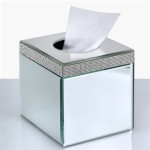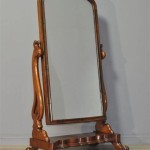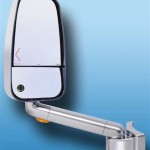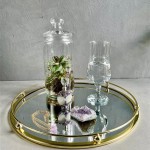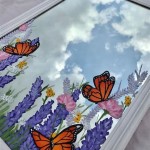Mirror Behind Shelf: Enhancing Space and Style
The strategic placement of a mirror behind a shelf offers a multitude of benefits, ranging from maximizing light and creating an illusion of depth to adding a touch of elegance and personal style. This design element can elevate a room's aesthetic while serving practical purposes. Understanding the nuances of implementing this technique allows for a seamless integration into diverse interior design schemes.
Key Considerations for Placement
Careful planning is crucial to maximize the impact of a mirror placed behind shelving. Consider the following points before implementation:
- Shelf Depth: Opt for shallower shelves to avoid obstructing the mirror's reflection and maintain a sense of spaciousness.
- Mirror Size: The mirror's dimensions should complement the shelf size and the surrounding wall space. Overly large mirrors can overwhelm the area, while small mirrors might appear disproportionate.
- Wall Space: Assess the available wall space to determine the most appropriate mirror and shelf combination. This ensures a balanced and visually appealing arrangement.
Maximizing Light and Space
One of the primary advantages of placing a mirror behind a shelf is its ability to enhance natural light and create an illusion of depth, particularly beneficial in smaller rooms or spaces with limited natural light sources.
- Light Reflection: Mirrors effectively bounce natural light deeper into the room, brightening the space and reducing the need for artificial lighting.
- Illusion of Depth: The reflective surface creates a visual extension of the room, making it appear larger and more open.
- Strategic Placement for Light: Position the shelf and mirror opposite a window or other light source to maximize light reflection.
Styling and Decorative Elements
The interplay between the mirror and the shelf presents opportunities for creative styling and displaying decorative items. Thoughtful arrangement adds personality and enhances the visual appeal.
- Object Selection: Choose items that complement the overall décor and create visual interest in the reflection. Consider varying heights and textures.
- Color Coordination: Coordinating the colors of the objects on the shelf with the surrounding décor creates a cohesive and harmonious look.
- Creating Focal Points: Strategically placed decorative items can draw the eye and create focal points within the reflected space.
Material and Finish Selection
The materials and finishes of both the shelf and the mirror contribute significantly to the overall aesthetic. Careful selection ensures a cohesive and stylish result.
- Shelf Material: Consider materials like wood, metal, or glass, choosing a finish that complements the existing décor.
- Mirror Frame: A framed or frameless mirror can dramatically alter the look. Select a frame style and finish that complements the shelf and the surrounding environment.
- Cohesive Design: Ensure the chosen materials and finishes create a harmonious and visually appealing combination.
Practical Applications in Different Rooms
This design element can be effectively incorporated into various rooms, serving both functional and aesthetic purposes.
- Living Rooms: Enhance the sense of space and display decorative objects.
- Dining Rooms: Create a more formal ambiance and reflect light from chandeliers or other light fixtures.
- Bathrooms: Maximize light and provide a functional space for toiletries.
- Bedrooms: Add a touch of elegance and create a focal point above a dresser or vanity.
Maintenance and Care
Proper maintenance ensures the longevity and continued aesthetic appeal of the mirror and shelf combination.
- Mirror Cleaning: Regularly clean the mirror with a suitable glass cleaner to maintain its reflective qualities.
- Shelf Dusting: Dust the shelves frequently to prevent buildup and maintain a clean appearance.
- Securing Items: Ensure items placed on the shelf are secure to prevent accidental falls and damage to the mirror or surrounding area.
Exploring Different Mirror Shapes and Styles
Experimenting with various mirror shapes and styles can further enhance the design and create unique visual effects.
- Round Mirrors: Soften the lines of a rectangular shelf and add a touch of modernity.
- Oval Mirrors: Create a classic and elegant look, particularly suitable for traditional interiors.
- Geometric Mirrors: Add a contemporary flair and visual interest to the space.
Budget-Friendly Options and DIY Considerations
Creating this design feature doesn't necessarily require a significant investment. Several budget-friendly options and DIY approaches are available.
- Repurposing Existing Shelves and Mirrors: Utilize existing furniture and mirrors to minimize costs.
- DIY Shelf Construction: Build custom shelves using readily available materials and online tutorials.
- Affordable Mirror Options: Explore budget-friendly mirror options from various retailers and online marketplaces.

Mirrors Behind Shelves A Good Look Or Not

Built In Bookcase Living Room Shelves Home

Antiqued Mirror On Back Of Shelves Design Ideas

Mirror Backing For Bookshelves In Living Room

Antiqued Mirrored Bar Backsplash Home Wet Bars For

Antiqued Mirror On Back Of Shelves Design Ideas

Mirror On Back Of Kitchen Shelving Design Ideas

Mirror Backed Bar Shelves Design Ideas

Diy Bathroom Mirror Storage Case Shanty 2 Chic

Mirrored Bar Backsplash With Glass Shelves Transitional Kitchen Floating

